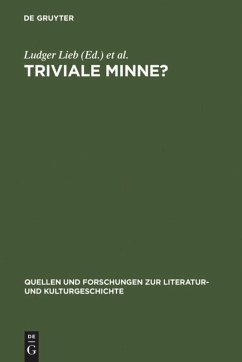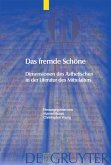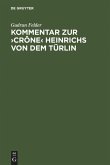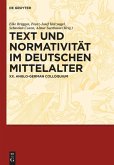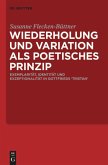Over 500 different examples of minnerede have been preserved.The texts, in which a first-person subject articulates his experience of courtly love or his knowledge about it, testify to the strength of a continuous fascination with this topic in the Late Middle Ages. Concentrating on the genre of minnerede, the twelve papers in this volume develop innovative approaches to the relationship of text and culture in the Middle Ages.The starting point is an at first provocative initial thesis, which however leads to the surprising conclusion that what modern readers might find â??trivialâ?? in a pejorative sense was a source of great fascination for medieval readers of these discourses of courtly love.Thus attention centres around the density of repetition, the availability of rhetorical gestures, the conventionality and the breaks with convention, the metaphorical indulgence and the construction of gender roles.
Über 500 verschiedene Minnereden sind heute noch erhalten. Die Texte, in denen ein Ich-Sprecher seine Minneerfahrung oder sein Wissen über die Minne mitteilt, zeugen von einer ungebrochenen Faszinationskraft dieses Themas im späten Mittelalter. Konzentriert auf die Gattung der Minnereden, werden in den zwölf Beiträgen des Bandes innovative Zugänge zum Verhältnis von Text und Kultur im Mittelalter entworfen. Grundlage dafür ist eine zunächst provozierende Ausgangsthese, die gleichwohl zu einer überraschenden Einsicht führt: Gerade von dem, was man heute an den Minnereden im pejorativen Sinne 'trivial' finden mag, scheint für mittelalterliche Zeitgenossen große Faszination ausgegangen zu sein. In den Blick kommen auf diese Weise u. a. die Dichte an Wiederholungen, die Verfügbarkeit von Redegesten, die Konventionalität und der Konventionsbruch, die Verwilderung der Metaphorik sowie die Konstruktion von Geschlechterrollen.
Über 500 verschiedene Minnereden sind heute noch erhalten. Die Texte, in denen ein Ich-Sprecher seine Minneerfahrung oder sein Wissen über die Minne mitteilt, zeugen von einer ungebrochenen Faszinationskraft dieses Themas im späten Mittelalter. Konzentriert auf die Gattung der Minnereden, werden in den zwölf Beiträgen des Bandes innovative Zugänge zum Verhältnis von Text und Kultur im Mittelalter entworfen. Grundlage dafür ist eine zunächst provozierende Ausgangsthese, die gleichwohl zu einer überraschenden Einsicht führt: Gerade von dem, was man heute an den Minnereden im pejorativen Sinne 'trivial' finden mag, scheint für mittelalterliche Zeitgenossen große Faszination ausgegangen zu sein. In den Blick kommen auf diese Weise u. a. die Dichte an Wiederholungen, die Verfügbarkeit von Redegesten, die Konventionalität und der Konventionsbruch, die Verwilderung der Metaphorik sowie die Konstruktion von Geschlechterrollen.

